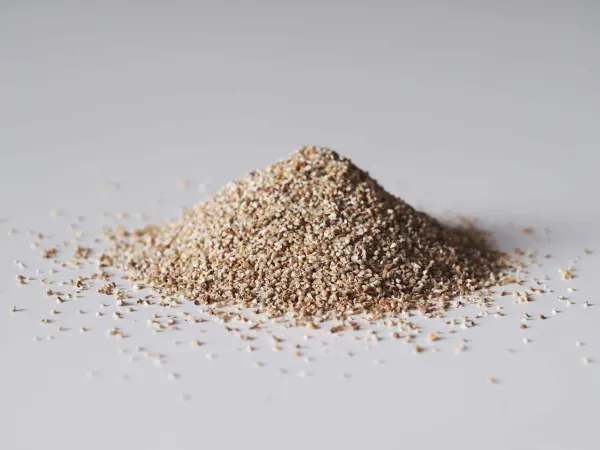Millet
Grain
Age Suggestion
6 months
Iron-Rich
No
Common Allergen
No

When can babies eat millet?
Millet may be introduced as soon as baby is ready to start solids, which is generally around 6 months of age. Millet is a gluten-free grain that can be offered to those with wheat allergy, celiac disease, and/or non-celiac gluten sensitivity.
Where does millet come from?
Millet is one of the oldest grains cultivated by humans. The tiny seeds grow abundantly on cereal grasses that thrive worldwide, particularly in regions of Africa and Asia where the ancient grain is a staple food. There are many varieties to try, including finger millet, fonio, foxtail millet, kodo millet, proso millet, sawa millet, and pearl millet—the most widely available type across the world. Pearl millet descended from wild grasses on the savannahs of West Africa, and over time, traveled east with trade to Asia. In modern times, most of the world’s supply of pearl millet comes from India, where the grain is called bajra and is used daily to make dosa (pancake), idli (steamed dumpling), khichdi (lentil stew), roti (flatbread), tikki (fritter), upma (porridge), and more.
Videos
Is millet healthy for babies?
Yes. A versatile gluten-free grain, millet provides good amounts of zinc to aid immunity, taste, and smell; plus B vitamins (notably B6) to provide energy to cells. Millet is not as nutritionally dense as other grains, though the pearl millet variety provides more fats than rice, maize, wheat and sorghum and more protein than brown rice or maize. Millet also contains some fiber, which helps nourish baby’s developing gut microbiome. Together, these nutrients all support baby’s rapid growth and development.
★Tip: Before cooking, soak millet in a covered bowl of water at room temperature overnight (up to 12 hours) or as directed by the recipe or package’s instructions. It is not necessary, but when you have the time, soaking helps reduce the grain’s phytates, which inhibit the body’s absorption of iron and zinc.
Can millet help baby poop?
Yes. Millet offers good amounts of fiber, particularly insoluble fibers (which help bulk up bowel movements) and phenols. Together, these qualities contribute to overall digestive health and bowel regularity. Note that pooping patterns can vary significantly from child to child. Be sure to talk to your pediatric healthcare provider if you have concerns about baby’s pooping and digestive function.
Is millet a common choking hazard for babies?
No. Millet is not a common choking hazard, though in theory an individual can choke on any food. As always, make sure you create a safe eating environment and stay within an arm’s reach of baby during meals. For more information on choking, visit our sections on gagging and choking and familiarize yourself with the list of common choking hazards.
Is millet a common allergen?
No, millet is not a common allergen. Allergies to millet are rare, but can be severe. Individuals who are allergic to rice may be sensitive to millet. In some cases, individuals with wheat or corn allergies may be sensitive to millet as well, however more research is needed. Fortunately, since millet is gluten-free, it is appropriate for individuals with celiac disease and non-celiac gluten sensitivity to consume.
Recommended Guide: Introducing Allergens
What are recipe ideas for cooking with millet?
Millet has a nutty taste, a fluffy texture, and is easy to cook. Millet tastes delicious in warm cereals like ngalakh, a creamy porridge sweetened with baobab and peanut in Senegal. The tiny grains work best when soaking up sauces, soups, and stews like leksour, a lamb stew on millet pancakes from Mauritania. Try millet as a gluten-free alternative in recipes that call for barley, bulgur, couscous, and wheat, and use it as a binder in burgers, energy balls, meatballs, and patties. You can also experiment with millet flour in baked goods and doughs like tô, a starchy dumpling served with stewed okra and other flavorful sauces in Burkina Faso.
★Tip: Did you know that you can pop millet like popped corn? Popped millet is best for older children, as it presents a choking hazard for the youngest eaters.
How do you prepare millet for babies with baby-led weaning?
Every baby develops on their own timeline, and the suggestions on how to cut or prepare particular foods are generalizations for a broad audience.
6 to 9 months old:
Mix cooked millet into a soft, scoopable food like mashed vegetables, raita, or yogurt to bind the tiny grains. Alternatively, use millet to make warm porridges or use cooked millet as a binder in oatmeal balls, fritters, meatballs, pancakes, or patties.
9 to 12 months old:
Incorporate cooked millet into finger foods such as burgers, dosa, dumplings, energy balls, fritters, idli, meatballs, pancakes, patties, or roti, and break the food into bite-sized pieces before serving. Of course, you may continue offering millet porridge and millet mixed into soft, scoopable foods as well.
12 to 24 months old:
Spice it up! Serve cooked millet in savory sauces, stews, and stir-fries. If you press the millet with the back of a fork, it sticks together a bit and may be easier for the child to self-feed. If you like, serve the millet alongside an age-appropriate utensil to encourage practice. If the child is not interested in using a utensil, don’t worry: using utensils can be exhausting for new eaters, and many children toggle back and forth between feeding themselves with their fingers and utensils. Consistent and accurate utensil use will come in due time, probably between 18 and 24 months of age.
For more information on the most important nutrients for babies, check out our Nutrient Cheat Sheet for Babies.
Written by
Expert Tips Delivered to Your Inbox
Sign up for weekly tips, recipes and more!
The content offered on SolidStarts.com is for informational purposes only. Solidstarts is not engaged in rendering professional advice, whether medical or otherwise, to individual users or their children or families. No content on this site, regardless of date, should ever be used as a substitute for direct medical advice from your doctor or your medical or health professional, nutritionist, or expert in pediatric feeding and eating. By accessing the content on SolidStarts.com, you acknowledge and agree that you are accepting the responsibility for your child’s health and well-being. In return for providing you with an array of content “baby-led weaning” information, you waive any claims that you or your child may have as a result of utilizing the content on SolidStarts.com.







